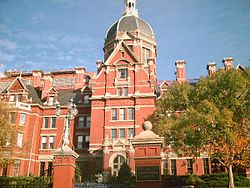Few, if any, lung cancers are cured (gone forever) without surgery to remove them. On the other hand, not all patients are cured by their operation and many are not thought to be candidates for an operation. The goal of all treating physicians, medical oncologists as well as thoracic surgeons, is to improve results with the goal of getting as close as possible to the ultimate: curing all patients. Of course, an even more attractive scenario is prevention but we’ll let that go for now.
For an operation to cure any type of malignancy, certainly including lung cancer, the surgeon must remove all cancerous cells. Any left behind will ultimately proliferate and spread. When the lung cancer is so locally invasive or has grown into anatomic structures that cannot be safely removed a surgeon is unable to perform curative surgery. The most advantageous situation is when preoperative staging investigations find no spread into either lymph nodes or distant organ (metastases) and the primary tumor is contained within the lung without invasion of neighboring tissue. But even when these conditions are absent, the cancer recurs in some patients, probably because very small and undetectable micro metastases are present. Accordingly, emphasis is turning to the benefit of preoperative therapy for these patients. This attention is based on recent studies and experiences which have shown that treatment of patients with advanced disease with a combination of chemotherapy and immunotherapy can produce sufficient reduction of the cancer that curative surgery becomes possible. This is a major advance over results with previously used preoperative therapies and brings hope where none previously existed. The bottom line is that this neo-adjuvant therapy (in contrast to adjuvant treatment which is given postoperatively) has a clear role in both reducing tumor burden locally and clearing micro metastatic deposits.



